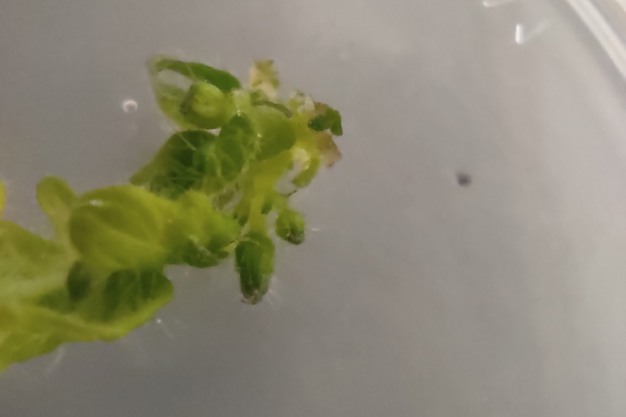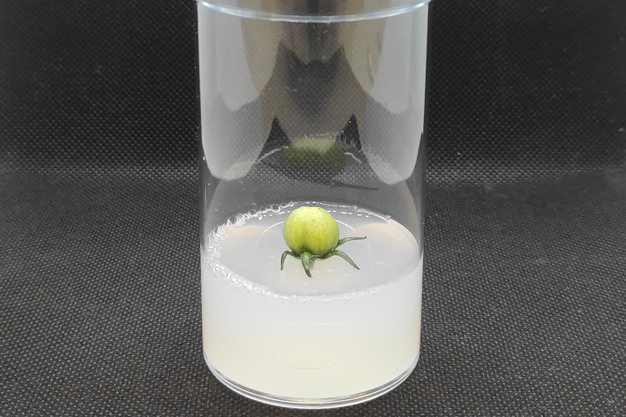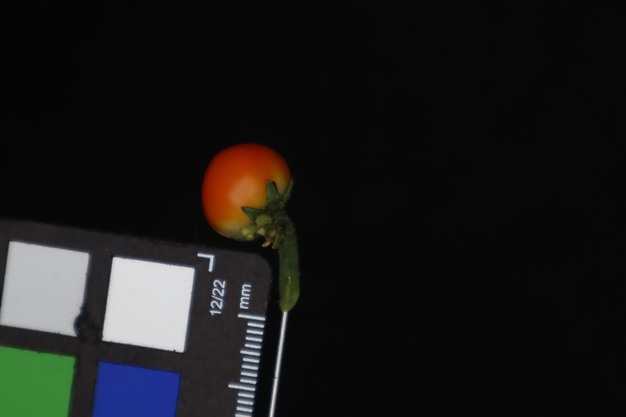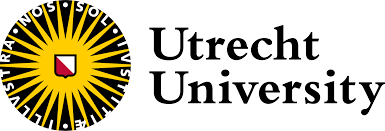At first glance, the tomatoes growing in Lucas van der Zee's lab don't look especially out of place. But what's missing makes all the difference: no leaves, no stems, no roots, and no light. These fruits are growing from flowers placed in a sugar-based nutrient solution, without the need for a full plant. "We're not trying to recreate nature," says van der Zee. "We're asking what functions we actually need to grow a fruit, and how to isolate those."
That question underpins Fruit of Knowledge, a collaborative project between Wageningen University and Utrecht University that aims to produce harvestable fruit directly from plant stem cells, skipping the vegetative phase entirely. Rather than optimizing whole-plant growth in a high-tech environment, van der Zee and his collaborator Niels Peeters are trying to rebuild fruit production from the cellular level up. © Lucas van der Zee
© Lucas van der Zee
Flower induced directly from meristem tissue in vitro, skipping the vegetative phase.
Deconstructing the plant
The team thinks in terms of functions, not structures. Instead of cultivating a full plant to get a tomato, they focus on the biological actions required to grow just the fruit. The result is a modular, five-stage system:
1. Starting material
Tissue is sourced from a seed, callus, or embryo. The team can also regenerate plant tissue from somatic cells using plant hormones.
2. Meristem formation
The tissue is treated with cytokinins to trigger the development of a meristem, the stem-cell zone responsible for new organ growth. Under natural conditions, the meristem would produce stems and leaves.
3. Flower induction
Using hormonal cues, the meristem is forced into flowering early, skipping the usual vegetative growth phase. "We stimulate the meristem to form a flower directly," says van der Zee. "That's the real shift in developmental logic."
4. Fruit development
Once a flower has formed and is pollinated or chemically triggered, it begins to fruit. The developing tomato is transferred to a sterile sugar-and-nutrient medium. Nutrients are absorbed through the cut stalk; roots are never formed.
5. Contamination control
Sugars make an ideal growth medium not just for plants, but for bacteria and fungi. Managing contamination is crucial. "You're basically creating paradise for microorganisms," van der Zee notes. "Keeping them out is half the challenge."
Nutrient delivery without roots
Surprisingly, the absence of roots hasn't posed a major barrier to nutrient uptake. Simply placing the flower's stalk into the medium has proven effective. Nutrients are absorbed through the vascular tissue of the fruit as long as the stalk remains functional. "There's some scar tissue that forms, but it doesn't seem to hinder uptake," van der Zee explains. "The system works well, at least with tomatoes."
This mimics principles used in temporary immersion bioreactors, common in plant tissue culture, where tissues are periodically submerged in growth medium and then exposed to air for oxygenation. © Lucas van der Zee
© Lucas van der Zee
Tomato grown in a sugar-based medium with no soil or root system. Fruits absorb nutrients directly through the cut stem.
Flowering without plants
While van der Zee focuses on fruit development, Utrecht-based researcher Niels Peeters is working on the molecular side of flower induction. His role is to generate flowers directly from undifferentiated plant cells, even without a mature plant.
"If I use a piece of stalk, it carries on growing and turns into a flower, as if it remembers what it was doing," Peeters told Wageningen Resource magazine. "How it remembers is a mystery. That intrigues me."
These breakthroughs allow the team to sidestep one of the most energy- and resource-intensive parts of any crop system: the early vegetative stage. They also open the door to much faster in vitro breeding cycles, enabling multiple flowering events in a fraction of the time. © Niels PeetersA tomato grown fully in vitro from flower to fruit, without light, roots, or a mature plant. Photo courtesy of Niels Peeters.
© Niels PeetersA tomato grown fully in vitro from flower to fruit, without light, roots, or a mature plant. Photo courtesy of Niels Peeters.
A flexible, evolving platform
The system is still under development, and challenges remain. Fruits grown fully in vitro without any part of the stem attached tend to remain small. "With a segment of the main stem still attached, we've seen the fruit grow as large or larger than on the plant," says van der Zee. "Without it, growth is limited. We're still investigating the cause."
Every cultivar also behaves differently in culture. That variability is a limitation but one the team embraces. "There are no universal rules in biology," van der Zee says. "Each species, even each tissue type, responds in its own way. That's why this will never be plug-and-play. It's a craft." © Lucas van der Zee
© Lucas van der Zee
Strawberry grown in vitro after flowering, part of early trials to test how different fruits respond to sugar-fed development.
Toward a new kind of system
Van der Zee believes that in the long term, fruit systems may be designed like fermentation platforms: optimized for specific traits, scalable, and adaptable to different environments and crops. "I think the design space is wide open. You could go from biotech-style bioreactors to something that looks more like a vertical farm but without the lights."
For now, the goal is to validate each stage of the system and test its flexibility. But the implications are already clear: if fruit can grow from meristem tissue, without soil, roots, or light, the definition of farming may need to change. "It's not about mimicking the plant," van der Zee says. "It's about understanding what makes a fruit possible, and designing a system for that."
For more information:
Wageningen University & Research
Lucas van der Zee
[email protected]
Utrecht University
Niels Peeters
[email protected]










